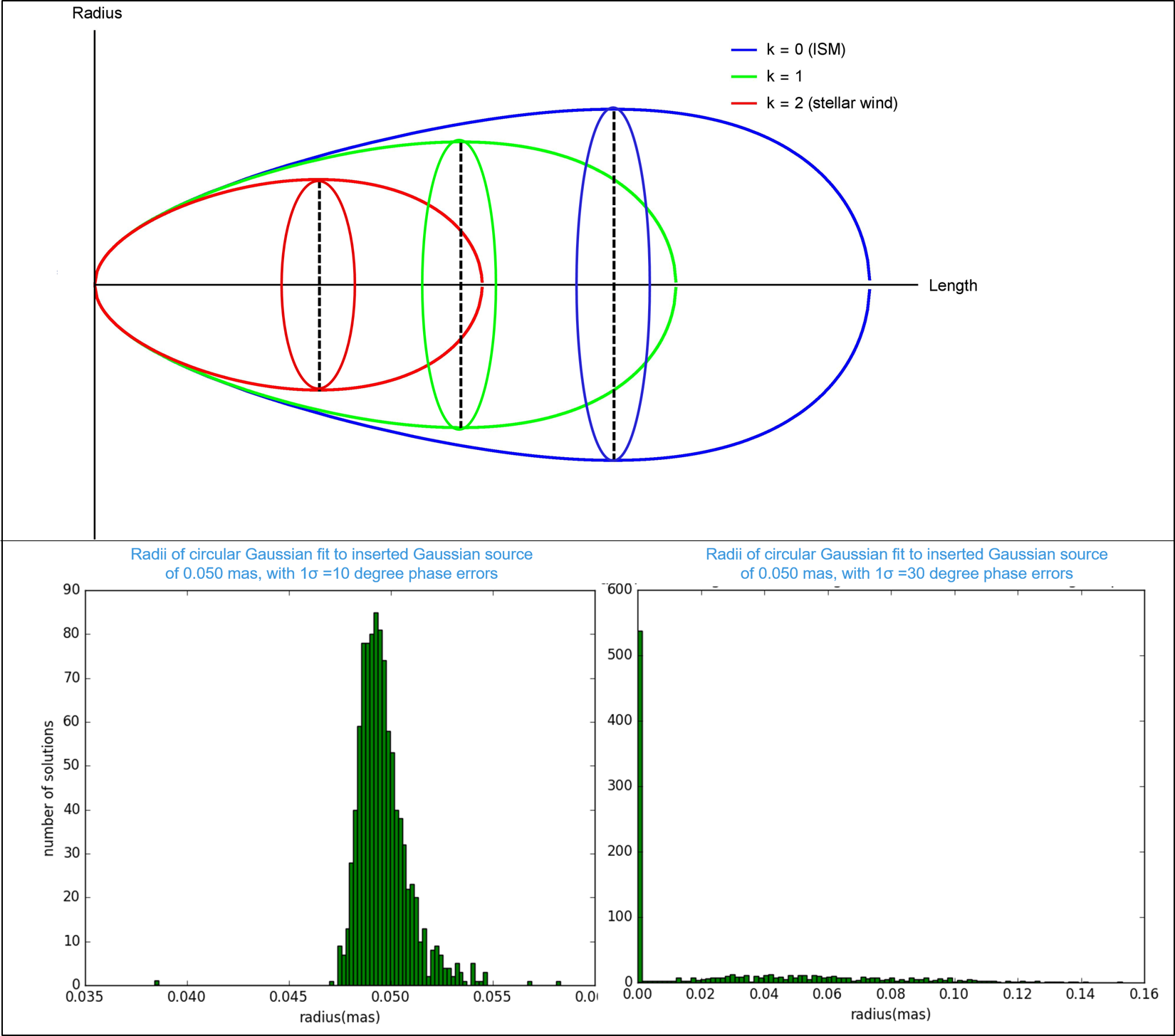Daily Image
07-09-2016Measuring the image size of a gamma-ray burst, to the diffraction limit and beyond!
| Submitter: | Floor Broekgaarden |
| Description: | During a gamma-ray burst (GRB) a pair of opposite ultra-relativistic jets are produced, that decelerate while interacting with the surrounding medium and produce broadband synchrotron radiation, the so-called 'afterglow', which in case of radio is in general visible from days up to months. Directly measuring the size of the jet and its evolution is important for constructing and testing theoretical models. Since GRBs are found at cosmological distances but their jets are smaller than a parsec in size, obtaining resolved images, even with VLBI, is extremely difficult and has only been done in one extremely nearby and luminous case: GRB030329. The goal of my summer project was to constrain the image size of GRB130702A, a relatively nearby GRB (redshift z = 0.145), that we observed with e-EVN for 13 hours, 14 days after the burst. The diffraction limit of our observations was 3 milliarcseconds (mas), but we could constrain the size of our jet to have an upper limit of 0.35 mas, one tenth of the diffraction limit. This was done by assuming a source intensity profile, and (model)fitting different source sizes to the visibility data (Marí-Vidal et al. 2012). However, we experienced that the degree of phase errors, influence the robustness of this modelfitting a lot, i.e. the outcome of modelfitting is strongly correlated with the degree of phase errors. In the top panel we have plotted one of the analytical models for the size of the jet at a certain moment of time. The size of the afterglow that is predicted, depends on the medium that it is propagating through (k=0 for inter stellar medium, k=2 stellar wind). Which also means that observing the size of the jet can constrain the environment of the GRB. In the lower panel are the histograms of the distributions of sizes of our Monte Carlo simulations shown for with phase errors of 1 sigma equal to 10 degrees (l) and 30 degrees (r). The scattered sizes in the right plot clearly shows that modelfitting is not robust when dealing with large phase errors, which is often the case in the longest baselines of the e-EVN. However, the future SKA will have smaller phase errors and will therefore be a promising new instrument for resolving more GRB jet image sizes, and deriving more physically parameters of GRBs. |
| Copyright: | Floor Broekgaarden, Zsolt Paragi, Ilse van Bemmel |
| Tweet |  |
